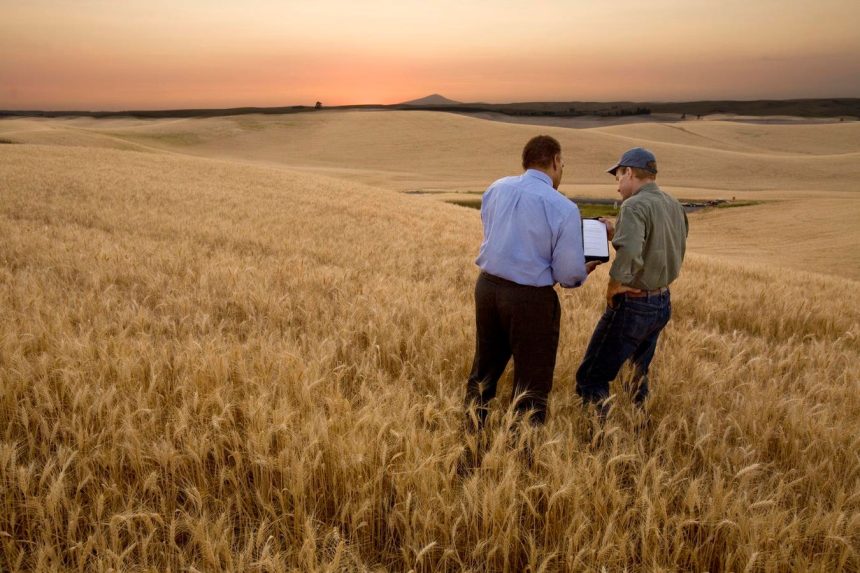Shashi Raghunandan, CEO of Oaken, is a part-time problem solver, painter and writer and a full-time husband and dog lover.
According to the World Bank, the average farm will produce 4.1 million data points per day by 2050, a 200-fold increase from 2014. This U.S., which is leading this data revolution in agriculture, is possibly going to produce several times more than the average farm around the world. There is no question about the potential to improve profitability and productivity; however, a lot of things have to be true before this promise is realized.
The opportunity is not lost on farmers. According to the “Farmer Perspectives on Data 2021” report, the incentive to collect and share data exists, and many farmers are willing to do so in order to improve profitability, reduce insurance premiums, lower rates from banks or get better terms from landowners.
However, this is set off by the fear of data collection, leading to more regulation and greater privacy concerns. Therefore, I believe that any evolution in data collection and monetization in the agriculture space has to consider these challenges.
The Missing Middle Problem
As part of a venture studio program, I had the opportunity to visit with manufacturers, farms, processors and retailers across the agri-food supply chain. I was struck by several things, but most of all, I was struck by both the sophistication of equipment that is used today in any farming operation and by the lack of decision-making tools at the farm level to connect to the supply chain and help make this monetizable.
Coming from the financial services industry, this was a problem we started encountering in the early 2000s when banks were in their infancy in terms of digitization. Massive quantities of data were being processed through newly installed core banking systems and transaction systems. Between the data generation/storage infrastructure and the end decision maker, there was a “missing middle” that evolved over the next 20 years to transform banking into a completely digital experience. Today, I can’t recall the last time I walked into a bank branch.
I see agriculture as being in a similar stage in its evolution. There is data generation and storage infrastructure in place; however, it has a missing middle between that infrastructure and its decision makers. That missing middle needs to be filled by data analysts/scientists, data brokers, data infrastructure companies, data monetization companies and technology companies that tie all this together. And all of this has to be powered by better connectivity.
This journey over the next few decades to realize the potential of this data is likely to be very different compared to financial services. This is primarily for three reasons.
1. The disconnect between data generators and profitability. The primary data source in agriculture is the farmer. However, unlike the banks, farming is a thin-margin business and subject to the vagaries of global market prices and weather. The farmer today is often a price taker, and sustained profits, unlike in financial services, is not a given. This places a huge downward pressure on the ability to invest in creating data assets.
2. Difference in skill levels. Financial organizations tend to be thousands of people strong, and in this context, recruiting and creating a strong bench of high-data professionals was not a challenge. Agriculture, on the other hand, faces labor shortages, and skilled labor is difficult to come by.
3. The heightened focus on privacy. The regulatory landscape has changed significantly since the early 2000s with a more nuanced understanding of data privacy. This will create some unique challenges for the industry as it maps its path ahead.
Fixing The Missing Middle
Fixing the missing middle will require some creative business model innovation. Consumer and regulatory demands for food traceability are a macro-trend looking to drive innovation and more technology in this space. Additionally, improved connectivity at the farm level is also likely to ease the flow of data between entities, driving a more connected ecosystem. This connectivity could add an additional “$500 billion in value to the global gross domestic product by 2030.”
Apart from business model innovation, I believe that we also need longer-term, mission-driven patient capital. The current model of venture funding that drives innovation in other industries needs to adapt to the longer-term considerations of the agricultural industry. The mission in this case is beyond profitability and extends to food traceability, food security and climate change. Capital that drives change in this industry needs to play the long game to incubate companies and draw fresh talent that are motivated by these challenges. This could take the form of industry-focused venture studios or accelerators.
Finally, privacy is the number one item on the farmer’s mind. They may not understand the full benefits of the data they gather, but they sure understand the full implications of that data being put in the hands of bad actors. Industry-level privacy initiatives, like the one being driven by ISO and Farm Foundation, could be broadened, much like how the financial industry rallied around ISO standards for payments and tokenization standards for card transactions.
The agriculture industry is at the cusp of tremendous change. Data is indeed the new soil, but it needs to fix the missing middle—a middle that focuses on the foundational challenge of privacy, puts money into the hands of farmers who generate the data and positions this in the context of the foundational challenges of our times like climate, food security and food traceability. What is at stake here is the very future of our food systems. As a quote often attributed to Lenin goes, “Every society is three meals away from a revolution.”
Forbes Business Council is the foremost growth and networking organization for business owners and leaders. Do I qualify?
Read the full article here









